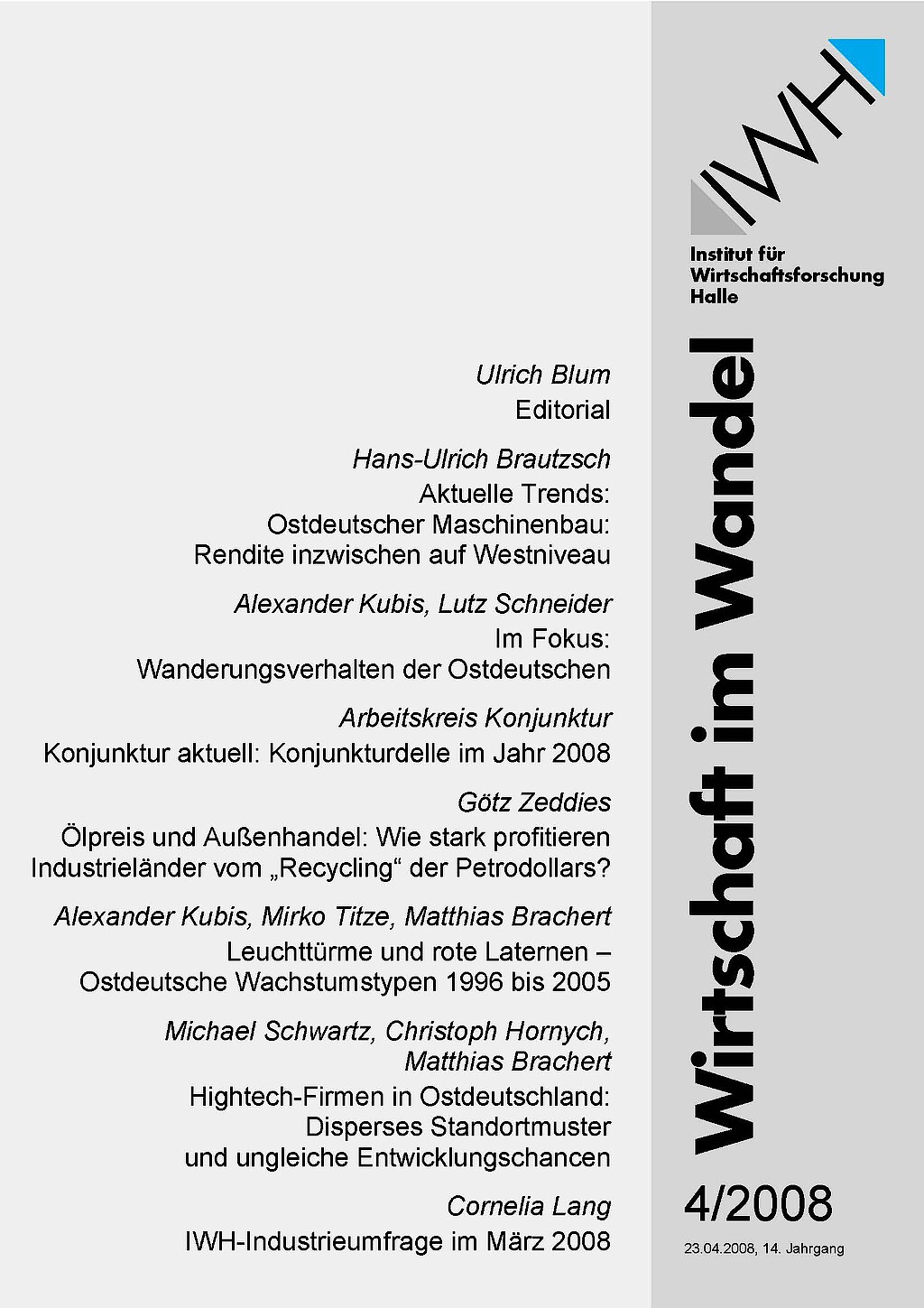
Oil Prices and International Trade: How Petrodollar Recycling Affects the Industrialised Countries
In den zurückliegenden vier Jahren haben sich an den internationalen Rohstoffmärkten die Ölpreise ungefähr verdreifacht. Seit den Ölpreisschocks der 70er und 80er Jahre wurden zahlreiche empirische Analysen zu den makroökonomischen Wirkungen von Rohstoffpreissteigerungen durchgeführt, die auf eine zunehmende Gefahr der aktuellen Ölpreis-Hausse für Konjunktur und Wachstum in ölimportierenden Industrieländern schließen lassen. Allerdings werden darin die Rückwirkungen von Ölpreissteigerungen über den Außenhandel ölimportierender Länder, die, im Gegensatz zu den binnenwirtschaftlichen Effekten im Zuge der Globalisierung an Bedeutung gewonnen haben, nur unvollständig berücksichtigt. Dies betrifft insbesondere die verbesserte Einkommenssituation ölexportierender Länder, die ihre Erdöleinnahmen größtenteils in den entwickelten Industrieländern recyceln. In der vorliegenden Analyse werden die Wirkungen von Ölpreissteigerungen auf die Warenexporte und -importe ölimportierender Industrieländer detailliert untersucht. Im Ergebnis zeigt sich, dass die dämpfenden Effekte bei den Warenausfuhren geringer ausfallen als bei den Wareneinfuhren. Während die Importnachfrage überproportional auf die Abschwächung der Konsum- und Investitionsnachfrage reagiert, stehen auf der Exportseite einer schwächeren Entwicklung der Ausfuhren in die Industrieländer hohe Exportzuwächse in die Ölförderländer gegenüber. Infolgedessen wird der negative Effekt von Ölpreisschocks auf Wachstum und Konjunktur in ölimportierenden Industrieländern vom Außenhandel über Verbesserungen der Außenbeiträge abgemildert, aber nicht kompensiert.




